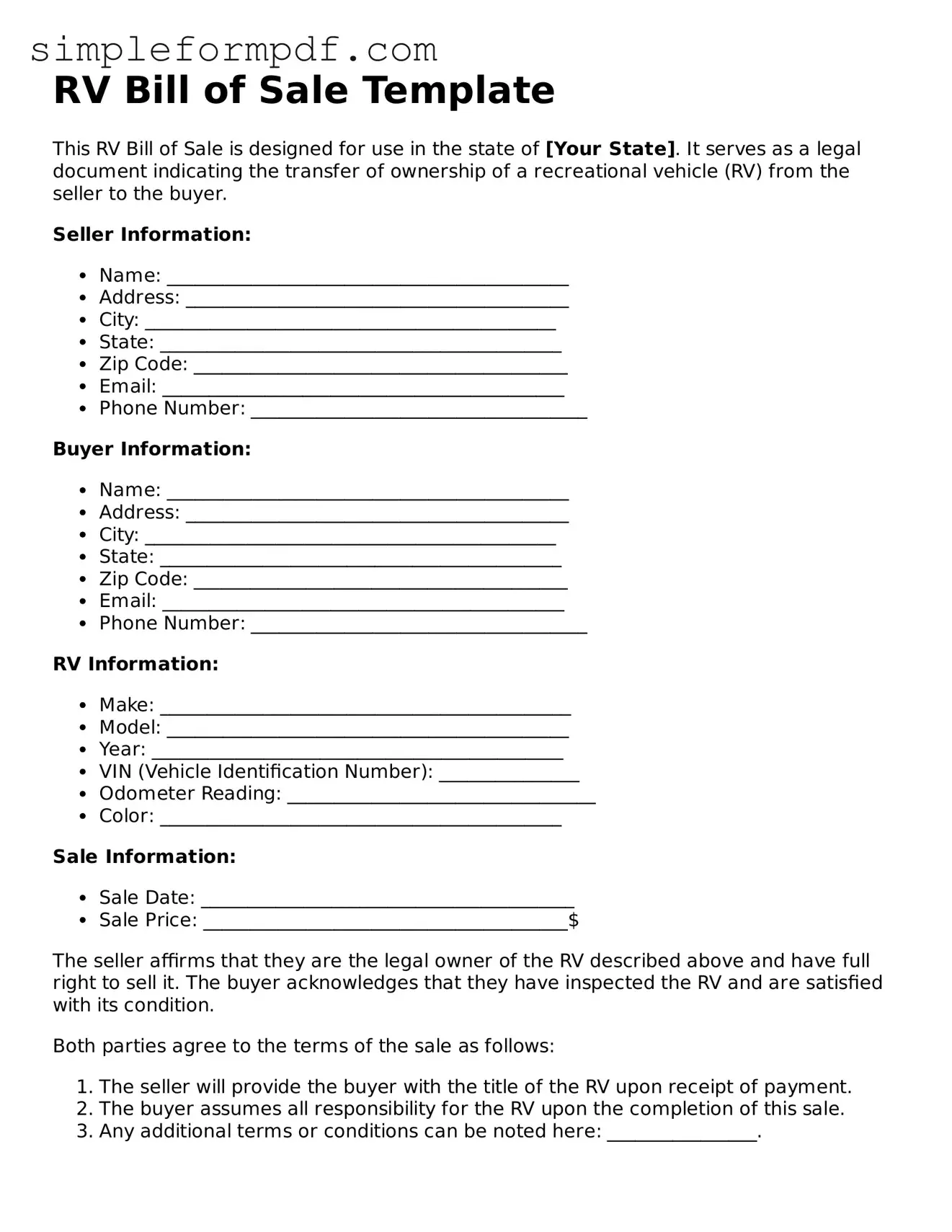RV Bill of Sale Template
This RV Bill of Sale is designed for use in the state of [Your State]. It serves as a legal document indicating the transfer of ownership of a recreational vehicle (RV) from the seller to the buyer.
Seller Information:
- Name: ___________________________________________
- Address: _________________________________________
- City: ____________________________________________
- State: ___________________________________________
- Zip Code: ________________________________________
- Email: ___________________________________________
- Phone Number: ____________________________________
Buyer Information:
- Name: ___________________________________________
- Address: _________________________________________
- City: ____________________________________________
- State: ___________________________________________
- Zip Code: ________________________________________
- Email: ___________________________________________
- Phone Number: ____________________________________
RV Information:
- Make: ____________________________________________
- Model: ___________________________________________
- Year: ____________________________________________
- VIN (Vehicle Identification Number): _______________
- Odometer Reading: _________________________________
- Color: ___________________________________________
Sale Information:
- Sale Date: ________________________________________
- Sale Price: _______________________________________$
The seller affirms that they are the legal owner of the RV described above and have full right to sell it. The buyer acknowledges that they have inspected the RV and are satisfied with its condition.
Both parties agree to the terms of the sale as follows:
- The seller will provide the buyer with the title of the RV upon receipt of payment.
- The buyer assumes all responsibility for the RV upon the completion of this sale.
- Any additional terms or conditions can be noted here: ________________.
By signing below, both the seller and buyer agree to the terms and conditions set forth in this RV Bill of Sale.
Seller Signature: ____________________________________ Date: ___________________
Buyer Signature: ______________________________________ Date: ___________________
This document is recognized under the laws of [Your State]. Make sure to keep a copy for your records.
